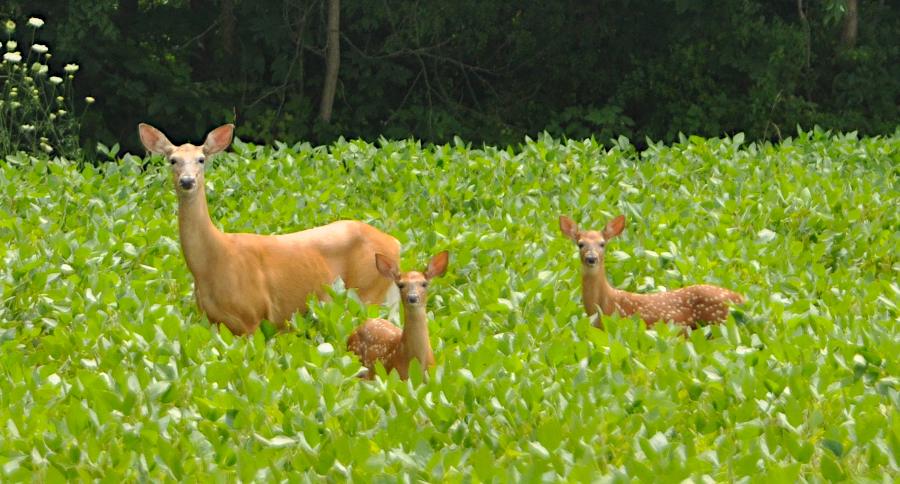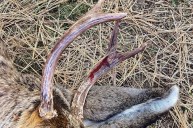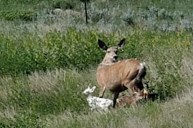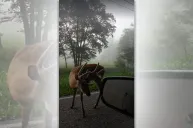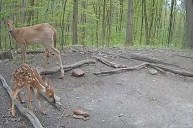Six fawns were found Paralyzed in Martha's Vineyard and officials want to know why.
The Massachusetts Department of Fish and Wildlife is getting closer to solving an unusual wildlife mystery on Martha's Vineyard after months of testing.
The Vineyard Gazette reports scientists haven't discovered a definitive cause for the six male fawns that were discovered in a state of paralysis on the New England island last year. However, they have narrowed the suspected cause to a chemical called Monensin. It's a chemical compound which is commonly added to livestock feeds and supplements as a medicine to control parasites.
"If deer are exposed to a high level of these compounds, it can cause behavior like what we are seeing," Mass Wildlife deer biologist David Stainbrook told the news organization. "We are not certain... [but] it is reasonable to think these could be related."
The reason they think there's a possible connection is because it can cause problems in the limbs and a general weakness in horses. The six fawns were all discovered paralyzed on the ground, only able to move their heads. All six animals either died in the field or were later euthanized by a veterinarian. They now believe there's a chance the chemical could have a similar negative effect on deer.
If Monensin is responsible, the bigger question is how it got into the deer. Stainbrook has a theory about that.
"It was such a poor acorn year," Stainbrook told the publication. "It's reasonable to think people may have thought the deer needed some help. And, for the first time, went and bought something to feed them."
Monensin is usually sold separately to be mixed in with feed, but Stainbrook says the compound in present in commercial livestock feeds from Rumensin, Purinia and Avatec. Feeding of wild deer is not allowed in Massachusetts, so if that's what happened, it was also illegal. Although Stainbrook also said it was also possible deer raided a supply of cow or chicken feed during the cold winter months.
They are hoping now the public will call in and hopefully shed some light on the mystery. In the meantime, he also advises hunters not to eat venison from animals that exhibited similar symptoms.
"The additive comes in a number of different chemical forms and it's not easy to test for," Stainbrook told the news organization. "If we could get some information from the public to help explain it, we may be able to confirm or rule it out."
State biologists have already ruled out many toxins and deer diseases like EHD, CWD and eastern equine encephalitis during the course of their investigation.
For more outdoor content from Travis Smola, be sure to follow him on Twitter and check out his Geocaching and Outdoors with Travis YouTube channels.
NEXT: A REMINDER FROM THE USFWS: PLEASE DON'T RELEASE YOUR BALLOONS
WATCH
